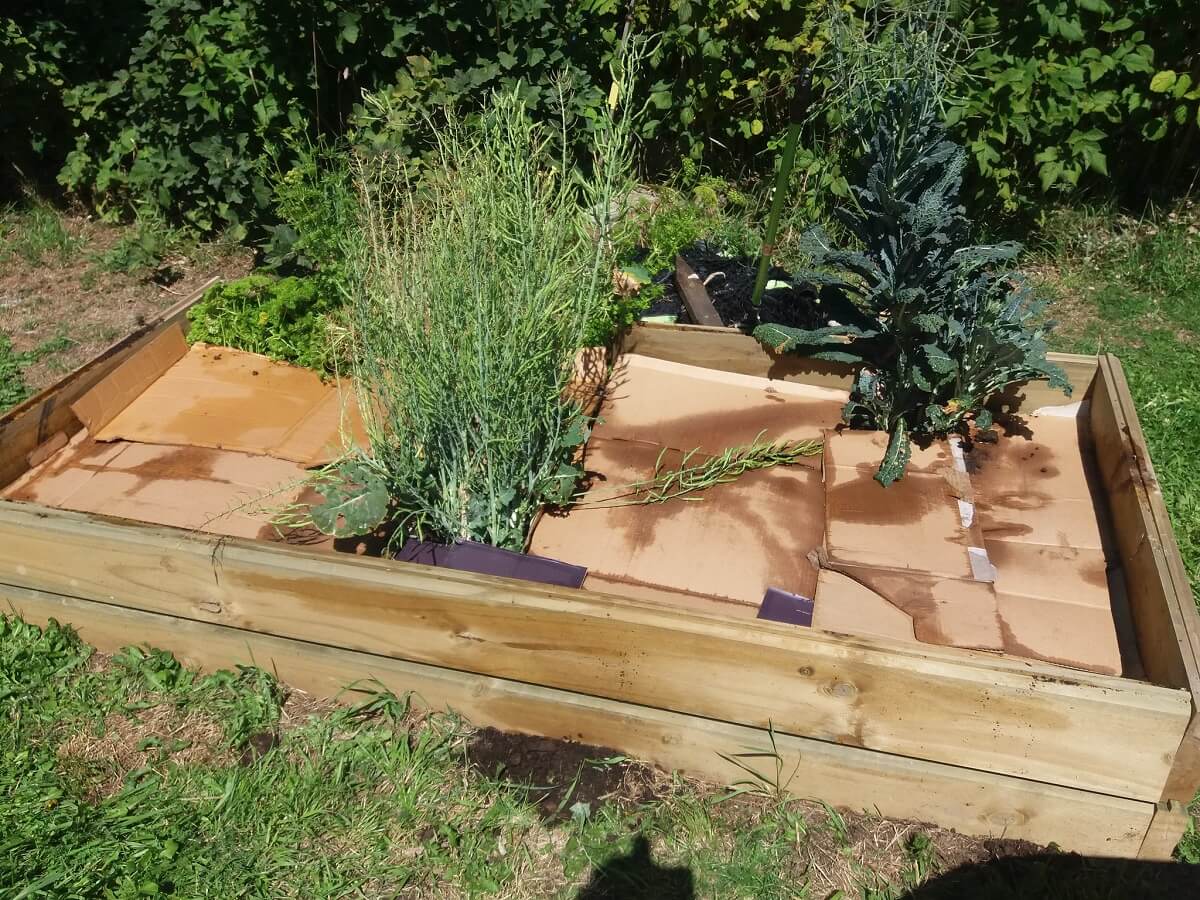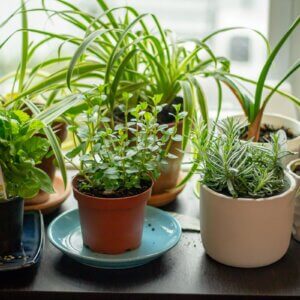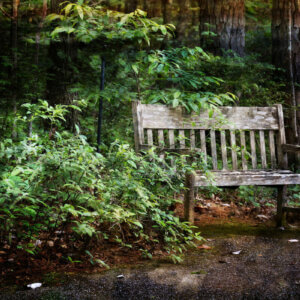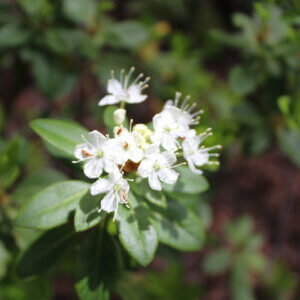As winter wanes and patches of bare ground open up in the fields, my green thumb gets crazy-itchy. I am eager to get back in the garden and get my eyes full of living, growing things again.
With the season’s change, however, comes the age-old game of chicken that gardeners play with the weather — determining the right time to put our tender annuals in the ground. A daring tomato-planter may throw caution to the wind and set out starts early, and then an unexpected frost can set them back to square one.
A cautious planter may be sure to get those sensitive sprouts out well after the threat of a freeze, but will have to endure the sight of their neighbor picking ripe, red tomatoes while their own plants have just begun pushing out buds. And as the summer turns to fall, the harvesting season of those hard-fought for fruits is hounded by the threat of the returning cold.
But we’re not helpless. There’s a huge array of options gardeners have innovated through the centuries (and learned how to protect plants) from simple shelters of leaves to ice-defying cold frames. To help you start what could be your best gardening season yet, here’s a helpful list of ideas on how to protect plants from frost and keep that garden growing as long as possible.
What Causes Frost?
In order to protect your gardens from the ravages of frost, it’s good to have a working knowledge of what frost actually is and what conditions may create it. Frost occurs when water vapor in the air forms dew, and is then also cooled to the point of freezing — usually at night — while you’re dreaming of those bumper tomato harvests. Those specific conditions plague gardeners in the early spring and late fall.

This is not a town-wide event, however. Frost can occur in patches across the landscape, covering one garden but leaving the garden next door barely touched. One of the factors that causes this is the shape of the land. Cold air is heavier than warm air, so any depression or low-lying area in the ground can allow the chill to pool and collect like an invisible puddle.
These areas can easily become “frost pockets” on chilly nights. Additionally, areas that slope to the north or areas with something blocking the morning light are the last to feel the sun’s warm touch every day. They are more likely to be glittering with frost on ideal mornings. To protect frost-sensitive plants in the garden, you need to create a barrier between their living surface and the dew that wants to settle on them.
Related Post: Preparing for Cold Weather Predators
When Do I Need to Cover My Plants?
The answer to this question depends on what sort of plants and plans you have. Not all plants respond to frosts the same way. Once you’ve gardened for a few seasons, you’ll know that to be true. Hardy plants like spinach, cabbage, carrots, parsnips, broccoli, and radishes really couldn’t care less about a frost, and taking the time to cover and protect them is a waste of effort.
The most tender plants like okra, eggplants, squash, watermelons, cucumbers, and peppers, however, can’t tolerate even a light freeze or a cold spell, and can be dead by morning if left exposed. Some gardeners don’t take the risk and would rather deal with a shorter growing season by putting out tender annuals well after the threat of frost. Others gamble by putting out plants earlier and taking steps to protect them if disaster looms. You get to decide which practice is best for you.
Thankfully, there are a few tools to help you assess the risks and prepare for the freeze. Once you get into gardening, you’ll become acquainted with your land’s planting zone and the associated first and last frost dates. These averages (and remember, they are averages) give gardeners ballpark figures of when they can expect to see ice-glittering mornings in the spring and fall.
This is how seed packet printers tell you when to put their contents in the soil. Usually, they’ll say to plant it within a certain amount of time surrounding the last frost date. Many gardening books come with a list of frost dates in the appendices, but they can also be found at websites like The Old Farmer’s Almanac or NOAA.
When you find the dates for your zip code, remember: Nobody has the right answer all the time. Even with these dates, cold snaps can appear out of the blue, and they don’t care what is printed in a gardening book or listed online.
So that said, here are some additional ways to watch the cold temperatures and skies to see if a frost is imminent. Sometimes, you’ll need to rely on good, old-fashioned going outside and looking up at the sky like farmers have done for centuries. Ideal conditions for creating frost include clear night skies, calm winds, and temperatures of 42 degrees Fahrenheit and below. Also, if your area is prone to fog, you are more likely to get heavy frost. All that airborne water is future frost waiting for the temperature drops.
What Can I Do to Protect Plants From Frost Damage?
I’ve grouped these ideas into two categories: short and long term. The first set will give you ideas of what you can use to protect your plants on an unseasonably cold night.
The second list will give you some more involved ideas for how to build some infrastructure into your gardening landscape, and protect your plants long enough to extend the growing and harvesting season.
Whether you go with a short or long term option, read on to learn how to protect plants from frost.
Short-Term, Immediate Protection
If conditions are perfect for potential frost and you have garden plants to protect, there’s a couple ways you can protect them through the night. The big challenge is to get tender plants covered so the dew can’t settle on their surfaces. If the dew can’t settle directly on the plants, it can’t do freezing damage when the temperature dips.
Just be sure to remove these covers by midmorning. Leaving your garden covered in nice weather will end up doing more harm than good
Leaves

Easy to find if you have trees on your property, easy to get from a neighbor if you don’t. You can even stock up on leaves in the fall and keep them in a leaf mold pile near the garden for use in the spring. If you wind up with extra leaves, let them sit longer, and they’ll break down into a wonderful mulch in a year or so.
Straw
Like leaves, straw can be used to cover plants temporarily. The nice thing about straw is that once frost danger passes, it can be left in the garden as weed-suppressing mulch.
Old Blankets and Bed Sheets
Pick up an assortment at a thrift store so that neither you nor your plants need to sleep in the cold. Blankets may be best for throwing over dwarf trees and shrubs as some of them may be too heavy for tender little plants. Save the sheets for your seedlings.
Cardboard Boxes

Make the most of the trash left over from online orders and prop them over plants for instant shelter. Once the threat of frost is over, be sure to repurpose them by stripping the tape, flattening, and using them as a weed-blocking layer beneath the mulch around fruit trees and garden paths.
Wall o’ Water
This one’s not free for the taking from your yard, but it is another option you could buy for offering protection to some special plants and extending the growing season. Their website is really junky, so you may be better off looking for the products at a garden store.
Gallon Water or Milk Jugs, 2-Liter Bottles

Cut the bottom from some gallon water jugs (or milk, oil, juice, and vinegar jugs are great for this) for a super quick shelter. If you’re leaving it on the plants for a few days, be sure to unscrew the cap from the top for ventilation.
Long-Term, Intensive Protection
If you want to invest in a more long-term solution, here are a few good ideas worth considering.
Cold Frames
Like a greenhouse in miniature, a cold frame is a simple, yet very effective means of protecting tender garden plants from frost and allowing crops to be harvested well into the winter months. Check out Elliot Coleman’s Four-Season Harvest for some inspiring photos of greens being harvested from a cold frame in the dead of a Maine winter.
Row Covers, Low Tunnels, Chenille

These are three similar methods of protecting plants that started in the 1940s when plastic became more widely available and gardeners were trying to find faster, less expensive alternatives to cold frames. Row covers can be made of burlap, vinyl, plastic, and similar materials.
The basic idea is to create a low-lying, ground level cover over the plants that inhibits dew from settling on the plant surfaces, and captures a bit of solar energy during the day to warm the air inside at night. Though they may provide insulation, be quick to install, and relatively easy to use, these are usually single-use and generate plastic sheeting waste once they tear or are worn out.
Hot Bed
Here’s an old idea for how to protect plants from frost that can do double duty as a cold frame or a raised bed (depending on how you build it) when not in active use. A hot bed is a shallow hole dug inside a structure, insulated, then filled with fresh manure.
A thick layer of sand is spread atop the manure, then pots and flats of plants can be placed on the sand. The active decomposition of the manure generates heat that lasts for several weeks, and once the heat dies down, the manure can be used as compost and the frame can turn into a cold frame or raised bed again.
South-Facing Slope
Protecting plants from early and late frosts may be as simple as putting your garden on a south-facing slope (if you’re in the Northern Hemisphere, that is. Reverse it if you garden in the Southern Hemisphere).
Related Post: Soil Temperature: What It Is And Why It Matters
South-facing slopes receive more of the winter sun’s rays and can sometimes be significantly warmer than slopes facing other directions. I can personally attest that my south-facing garden sometimes avoids frost at least two weeks longer than other areas on my homestead.
Finally, even if you don’t have a natural south-facing slope, you can fabricate one with your shovel by turning a garden plot into an ado — a sloped bed that faces the south.
Stone Wall

Another idea taken from old French gardens (and undoubtedly other peasant traditions the world over) is to locate frost-sensitive plants in an area of the garden that is bordered by a south-facing stone wall.
The stone acts as a heat sink, and will absorb heat from the sun all day and then radiate that warmth at night, allowing plants near it to be protected from freezing temperatures longer than their neighbors. Espaliered fruit trees can especially benefit from this during the spring, as this warming effect may protect tender blossoms.
Cold-Hardy Varieties of Plants
Just because some popular varieties of plants are sensitive to a chill doesn’t mean that every variety of that plant is! My favorite way of dealing with the changing seasons is by starting and ending the tender annual growing season with varieties that have been specifically bred to deal with the cold — and keep on keepin’ on!
Look through seed catalogues specifically for cultivars that have been bred for cold climates, and you’ll be sure to find a new favorite.
Hopefully these ideas can be added to your ever-growing arsenal of knowledge to protect your garden and feed your family some of the best homegrown goodness. What are your tips for how to protect plants from frost? Feel free to comment about them below and add to the inspiration.











































It’s just for those unexpected emergency cold snaps, but a coating of ice on your plants before the sun hits them in the morning will prevent frost damage on most plants. I read about it in a story about young Chinese farmers asking their elders what do do in an emergency. I have tried it with a trombone sprayer at 5 am in an orchard in early bloom, and with a watering can in a greenhouse that lost heat in the night. It works.
My grandfather said the same thing, but he used a hose.
Can plastic tarps be used in place of the sheets?
What if you wake up and garden plants are covered in ice? Do you spray them or just leave it? Is there any thing that will save them?
Some places say you can’t use plastic to protect plants from late frost. . . .and some places say you can. Ugh, which is it? I have a tunnel cover that is plastic. If it isn’t safe then why would they sell it??
Thanks for you help. BTW, I am also in MO, zone 6b now 7a.
People sell anything they can make money on. The fidget spinner has no real function but it was sold millions of times, for example. Plastic does function as an insulator when thick enough… but when dealing with plastic sheets that are typically 1/32″ to 1/8″ there just isn’t enough material to prevent heat transfer. The idea is to trap the heat under the sheet, so we need something that has the ability to absorb and hold the heat permeating from the ground. Air is an excellent insulator… if you do a dual-layer of plastic with at least 2″ of air in between it would work well, although that starts making the plastic you bought become less affordable, as it doubles the cost. I hope my explanations help, and wish you luck.